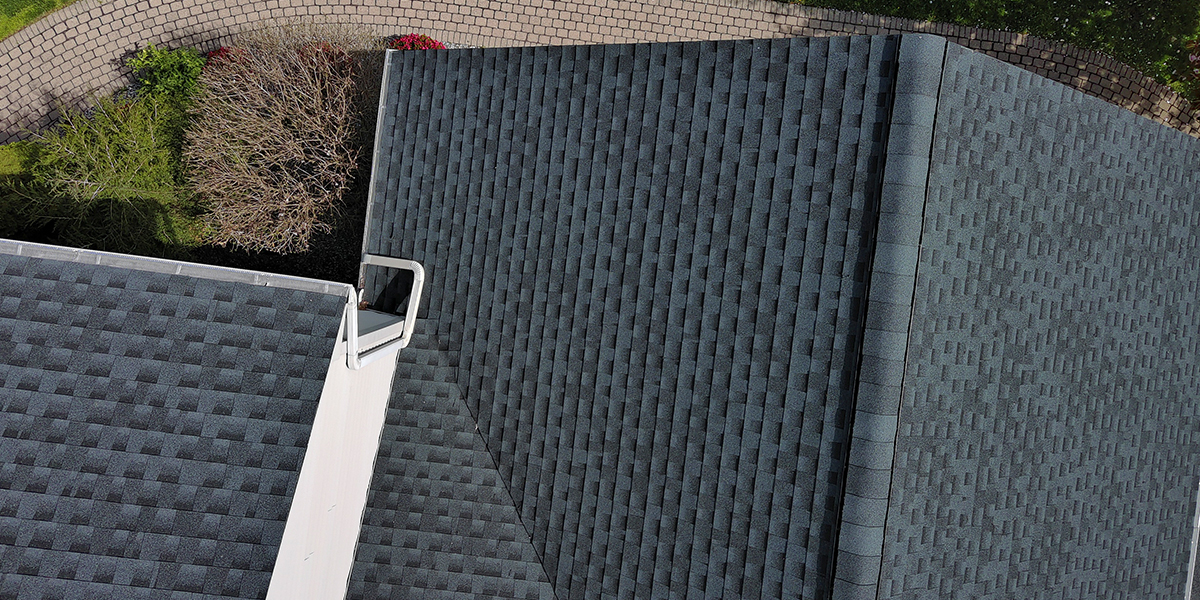Asphalt shingles
Asphalt shingles possess an overwhelming share of the U.S. steep-slope roofing market and can be reinforced with organic or fiberglass materials. Fiberglass shingles consist of a fiberglass mat, top and bottom layers of asphalt, and mineral granules.
Asphalt shingles’ fire resistances are categorized by Class A, B or C. Class A signifies the most fire-resistant; Classes B and C denote less fire resistance. Generally, most fiberglass shingles have Class A fire ratings, and most organic shingles have Class C ratings.
Asphalt shingle products are available in laminated (architectural) grades that offer a textured appearance. Copper-coated granules also can be applied to asphalt shingle products to protect against algae attack, a common problem in warm, humid parts of the U.S. Asphalt shingles are available in a variety of colors.
NRCA recommends use of shingles that comply with ASTM D3462, “Standard Specification for Asphalt Shingles Made from Glass Felt and Surfaced with Mineral Granules.” Not all asphalt shingles comply with this standard. If a shingle complies, it typically will be noted in the manufacturer’s product literature and on the package wrapper.
Wood shakes and shingles
Wood shakes and shingles are made from cedar, redwood, Southern pine and other woods; their natural look is popular in California, the Northwest and parts of the Midwest. Wood shingles are machine-sawn; shakes are handmade, and their surfaces are rough. A point to consider: Some local building codes limit the use of wood shingles and shakes because of concerns about fire resistance. Many wood shingles and shakes only have Class C fire ratings or no ratings at all. However, Class A fire ratings (the highest rating available) are an option for certain wood shingle products that incorporate a factory-applied, fire-resistant treatment.
Tile
Clay or concrete tile is a durable roofing material. Mission and Spanish-style round-topped tiles are used widely in the Southwest and Florida, and flat styles also are available to create French and English looks. Tile is available in a variety of colors and finishes. However, tile is heavy, so if you are replacing another type of roof covering with tile, you will need to verify your home can support the added load.
Slate
Slate is quarried in New York, Pennsylvania and Vermont. It is available in different colors and grades depending on its origin. Considered virtually indestructible, it is more expensive than other roofing materials. In addition, its application requires special skill and experience. Many older homes, especially in the Northeast, still are protected by this long-lasting roofing material.
Metal
Residential metal roofing is one of the fastest-growing segments of home improvement. There are two types of metal roofing products: panels and shingles. Numerous metal panel shapes and configurations exist. Metal shingles typically are intended to simulate traditional roof coverings, such as wood shakes, shingles and tile. Apart from metal roofing’s longevity, metal shingles are relatively lightweight, have a greater resistance to adverse weather and can be aesthetically pleasing. Some have Class A fire ratings, the highest rating available.
Solar
Solar roofing materials, also known as photovoltaic roofing materials, are becoming increasingly popular among homeowners looking for ways to decrease their dependence on local electricity grids while taking advantage of tax credits. Solar roofing material can come in the form of shingles, tiles or panels, and installation requires familiarity with electrical systems.
Synthetic roofing materials
Synthetic roofing materials simulate various traditional roof coverings, such as slate and wood shingles and shakes; however, they do not necessarily have the same properties. It is important to research any synthetic product you are considering to ensure it meets your needs.


